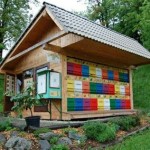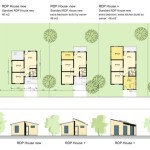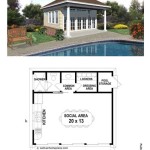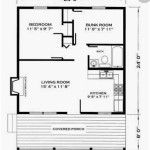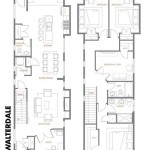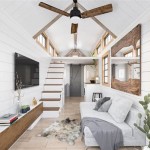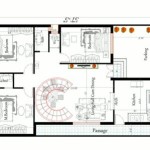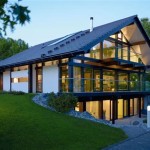Hunting Shoot House Plans: Designing for Effective Tactical Training
Hunting shoot houses offer a controlled environment for practicing tactical shooting skills applicable to both hunting and self-defense scenarios. A well-designed shoot house allows for dynamic movement, target acquisition, and safe weapons handling practice. This article examines key considerations for planning and building a hunting shoot house.
Safety First: Paramount in Shoot House Design
Safety should be the foremost concern when designing a hunting shoot house. This involves careful planning of the structure, material selection, and operational procedures.
- Ballistic Protection: Walls and other structural components must be constructed of materials capable of stopping or significantly slowing down projectiles. Common choices include reinforced concrete, steel plates, or specialized ballistic-resistant materials. The chosen material should be appropriate for the firearms intended for use in the shoot house.
- Clear Entry and Exit Points: Clearly marked and unobstructed entry and exit points are crucial for safe movement within the shoot house and for rapid evacuation in emergencies.
- Ventilation and Lighting: Adequate ventilation is essential to prevent the buildup of gunpowder fumes and other airborne contaminants. Proper lighting ensures clear visibility, minimizing the risk of accidents.
- First Aid and Emergency Procedures: A well-stocked first aid kit and clearly defined emergency procedures are essential. Regular drills and training for users on emergency protocols should be implemented.
Location and Footprint: Choosing the Right Site
The location and footprint of the shoot house are crucial aspects that affect its practicality and safety. Careful consideration of these factors is paramount.
- Land Availability and Zoning: Ensure that the chosen location has sufficient land area and complies with local zoning regulations for shooting ranges and similar structures.
- Noise Control: Minimize noise pollution by considering the surrounding environment and incorporating noise abatement measures such as berms or sound-absorbing materials.
- Accessibility: The shoot house should be easily accessible for users and emergency services, with well-maintained access roads.
Internal Layout: Optimizing for Training Scenarios
The internal layout of the shoot house dictates the complexity and effectiveness of training scenarios. The design should encourage realistic training and foster adaptability.
- Modular Design: A modular design with movable walls and props allows for the creation of diverse and adaptable training environments.
- Multiple Rooms and Hallways: Incorporating multiple rooms, hallways, and doorways allows for the simulation of various real-world structures and scenarios.
- Target Placement Systems: Integrated target placement systems allow for dynamic target presentation and varied training exercises.
- Shoot/No-Shoot Targets: The use of shoot/no-shoot targets enhances decision-making skills under pressure, crucial for both ethical hunting and self-defense situations.
Construction Materials: Balancing Cost and Effectiveness
Choosing the appropriate construction materials requires a balance between cost-effectiveness and ensuring the structural integrity and ballistic protection of the shoot house.
- Concrete: Reinforced concrete provides excellent ballistic protection, durability, and fire resistance, but can be more expensive.
- Steel: Steel plates offer a high level of ballistic protection and are relatively easy to install, but can be susceptible to ricochets.
- Wood Framing with Ballistic Liner: Wood framing with a ballistic liner can be a more cost-effective option, offering a balance between affordability and protection.
Ventilation and Lighting: Essential for a Safe and Functional Environment
Proper ventilation and lighting are vital for creating a safe and functional training environment within the shoot house.
- Mechanical Ventilation: A mechanical ventilation system is recommended to ensure proper air circulation and removal of gunpowder fumes.
- Natural Lighting and Supplemental Artificial Lighting: Combining natural lighting with strategically placed artificial lighting fixtures ensures adequate visibility within the shoot house.
Legal Considerations: Compliance with Regulations
Understanding and complying with local, state, and federal regulations is essential for the legal operation of a hunting shoot house.
- Building Permits: Obtain the necessary building permits before commencing construction.
- Firearm Regulations: Ensure compliance with all applicable firearm regulations, including storage and transportation requirements.
- Environmental Regulations: Address any environmental concerns, such as lead contamination from projectiles and noise pollution.
Maintenance and Upkeep: Ensuring Long-Term Functionality
Regular maintenance and upkeep are crucial for preserving the integrity and safety of the shoot house.
- Regular Inspections: Conduct regular inspections of the structure, ballistic protection, and ventilation systems.
- Target Replacement: Replace damaged targets promptly.
- Cleaning and Debris Removal: Regularly clean the shoot house and remove debris, including spent cartridges and other debris.

4x6 Shooting House Plans Howtospecialist How To Build Step By Diy

5x5 Shooting House Plans Myoutdoorplans

4x6 Shooting House Plans Howtospecialist How To Build Step By Diy

5x5 Shooting House Roof Plans Myoutdoorplans Free Woodworking And Projects Diy Shed Wooden Playhouse Pe Deer Stand Blind

5x5 Shooting House Plans Myoutdoorplans

5x5 Shooting House Plans Myoutdoorplans

Diy Build A Portable Shooting House Mossy Oak

11 Free Diy Deer Stand Plans Blind

4x6 Shooting House Plans Howtospecialist How To Build Step By Diy

Shooting House Plans Hunting Design With Photos

